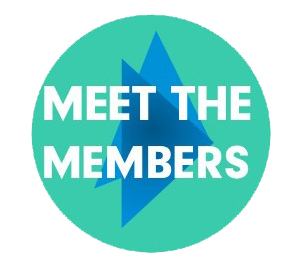 In this Meet the members piece we speak with Hilary Jennings from the Happy Museum Project and Transition Network, two Alliance members which promote systemic change with the wellbeing of people and the planet at its core.
In this Meet the members piece we speak with Hilary Jennings from the Happy Museum Project and Transition Network, two Alliance members which promote systemic change with the wellbeing of people and the planet at its core.
Why did you join the Rapid Transition Alliance?
It feels as if there is a strong connection between the ambitions of the Happy Museum Project and the Rapid Transition Alliance; an understanding of the need for systemic change that focuses on the wellbeing of people, place and planet. We both recognise that big shifts in how we operate will be needed to achieve this. I also appreciate the idea that stories from our past are useful to help us understand how we might change now in order to make a better future for all. Andrew Simms from the Rapid Transition Alliance spoke at our first symposium in 2012 about the myth of permanence and this resonated for us in the museum world; although they sometimes had a fusty stereotype, museums are far from being static and can even be seen as records of historical change.
What for you is the biggest challenge of rapid transition?
The mainstream media. Most people outside the bubble of green interests simply don’t see these issues or stories at all in the mainstream media. We don’t see enough talked about the potential of our shared future and how different it could be. Museums are a good community resource for telling stories, and are increasingly focusing on our future as much as our past. However, a wide range of people of all ages visit our museums and we have the opportunity to introduce issues to them. They may go to a museum for one reason and get something else completely different from their visit. Museums are mostly seen as safe spaces and are widely trusted. I noticed that the environmental protest movement Extinction Rebellion held several of their events in museum spaces, for example.
What is your organisation doing to encourage rapid transition?
We’re not doing as much as we would like because we are struggling for funding at the moment. We hope to have a project underway soon in which communities work with museums to tell their own stories of rapid transition and look forward to sharing this with the Rapid Transition Network. Meanwhile, we are sharing the thinking internally and externally. Some of the work done in individual museums under the Happy Museum Project is part of the wider transition process, encouraging us to work toward a more inclusive world with wellbeing at its heart. There is also a transition going on within the museum world, as best practice moves toward a more dynamic, co-produced, reinterpreted type of work, attempting to decolonise the way we look at the world and to represent our communities better.
What is your favourite example of rapid transition?
My favourite example is seeing the transition in my own local area and how community engagement has worked in unexpected ways. We set up a Transition Town group in Tooting, southwest London, with lots of ideas and plans. Although few of these happened, lots of other stuff did. The number and scale of community groups doing all sorts of activities has rocketed and given me a different perspective on how change happens. I can’t put it down to any single thing, but it’s about the energy of finding intertwined common values. If you have these and you see other people taking action, perhaps you are more likely to respond. In early meetings, we sometimes had just one person turn up, whereas now it’s usually 20-30 people for any given event and sometimes 70 or more. Some seismic shift is going on. I’m interested in how we respond to energy production and demand, and how our lives evolve alongside this. The first commercial buildings were sited because of their energy needs by rivers, where mills helped their processing. Where will we gather and how will we organise in the future? Humans are highly adaptable and we can shift.
What one thing would best help the task of rapid transition?
We need a media and, particularly, a TV network that tells a different story about possible futures and a politics that isn’t stuck in binary questions. We also need the spaces to think more creatively. It is so frustrating that there is no room to explore or elaborate on alternative versions of politics. I see this kind of thinking bubbling up from all over the place, from XR, Transition Towns, Rapid Transition Alliance, museums; there is a real desire to work in a different way. We are still too output driven, which can kill creativity, because positive results are not always made in a linear fashion – they come from mistakes, crazy ideas, using something for a different purpose, and experiments. We carried out an experiment in thinking about the future called “Pop-up tomorrow” in which people come into an empty room together to imagine the future. Some people actually went away and set up what they had imagined, while others felt the experiment was pivotal in how their lives developed afterwards. We would like to do a whole load more of these!
